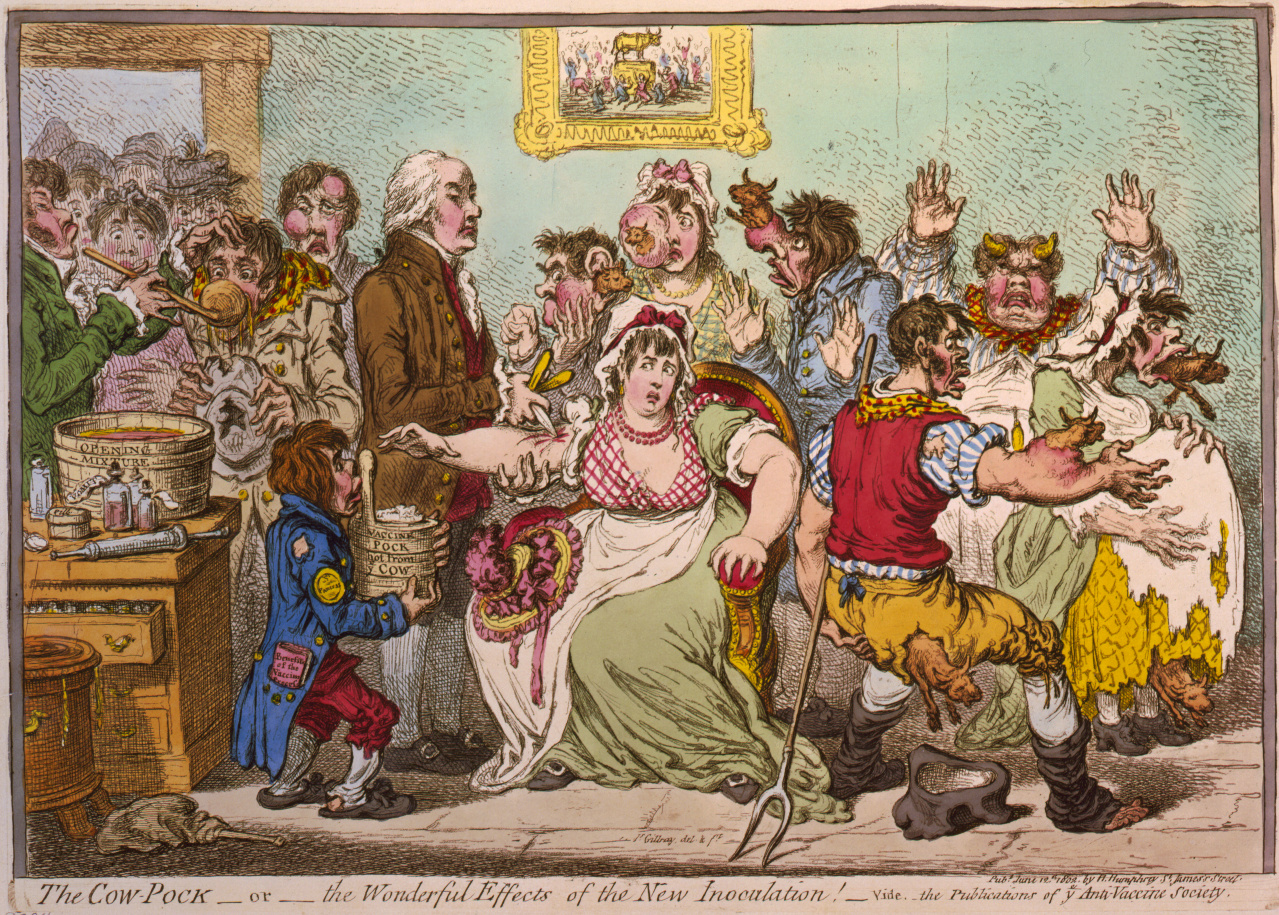Cold and flu season is here and it might have you sniffling and sneezing but at least it doesn't have you covered in ungainly pustules. Smallpox was the great villain of the 18th century, claiming 400,000 Europeans a year (as well as annihilating native cultures in the Americas and Australia) making it the leading cause of death. The disease was deadly and those who survived forever had their pock marks as a reminder of the deadly disease they escaped.
One famous lady scarred by the pox was Lady Mary Wortley Montagu who even lost her eyelashes to the disease. While living in the Ottoman Empire (modern-day Turkey) Lady Mary observed that the locals had come up with a form of preventative medicine: inoculation. When an infected individual developed the pustules (which would eventually burst causing the worst smell imaginable) the goop inside the pustule would be collected and then either poked with a needle or cut into with a knife into the person to be inoculated. Children were more susceptible to the disease and also took to the inoculation better than adults. After a few days a blister would develop in that area and pop and by then the patient was filled with all the wonderful antibodies needed to fight off the disease. You can imagine Lady Mary's delight in learning the procedure.
When Lady Mary informed England of inoculation it received mixed reactions. Many dismissed it primarily because the procedure came from the barbarian Turks. Others snubbed inoculation because a female brought about its attention. One person who was totally open to the idea was Queen Caroline and she quickly convinced her husband to investigate. King George II tested inoculation out on prisoners who were promised freedom for their part in the case study. When all the prisoners survived the ordeal the King and Queen had their own daughters inoculated which was also a success.
Not all inoculations were a success however. When George III and Queen Charlotte ruled, they had all their children inoculated while still babies or toddlers. Sadly, Prince Alfred, their fourteenth child died from complications from smallpox inoculation, sending the family into a deep and unofficial mourning. Still, many British families, especially in the aristocracy, chose to inoculate their children. Lady Spencer was firm in her opinion that all her grandchildren should receive the procedure.
Toward the end of the century Edward Jenner noticed that milkmaids who caught cowpox from their bovine friends seemed immune to smallpox. Cowpox was a mild strain of smallpox, passed down from, you guessed it, cows to people. Jenner began inoculating people with cowpox to avoid disasters like Prince Alfred's death and he was very successful. Although once again, many people remained suspicious. It was Jenner's efforts that gave us "vaccination;" vacca is Latin for cow. Next time you are at the doctor's for your cow-inations I hope you are brought to mind the efforts of Lady Mary and Edward Jenner.



Just proves that women aren't as hopeless as everyone think we are :)
ReplyDeletebut... wow, small pox would have been horrible to have
This was fascinating! Thank you for sharing it; it is a part of history that is never taught in school, or at least with the same flair. So sad for Prince Albert, but if he was their only loss, they really were quite fortunate with 14.
ReplyDelete*oops, I mean Prince Alfred
ReplyDeleteOnce I heard of a Queen who put dove blood on her face, in a desperate impulse of getting rid of her pox marks. Poor girl, in a world where women are valued for their pretty face, and specially in that time. It must have been dreadful for her...
ReplyDelete@Rebecca, Exactly! I give Lady Mary major credit for even experiencing the culture enough to witness inoculation. So many ladies would be afraid to leave their house.
ReplyDelete@Lady Webster, They were fortunate...of course they hated a couple of them so perhaps that's partly why his death was such a blow to them ;)
@Miss Honnete, Wow! I wonder how that worked out for her...
We can thank smallpox for the iconic makeup crazes of the 18th century. Lead-based white makeup and beauty spots became popular for their ability to hide pock marks
What a fascinating post! I was bored and I stumbled upon your beautiful blog today. I'm your newest follower both here and twitter.
ReplyDeleteTaylor
http://allthingshistoricalfiction.blogspot.com/
Huzzah! So very pleased that you found me!
ReplyDeletehahahha how can I even read this when I can't get past the first image!
ReplyDeleteI guess vaccination was proven "safe and effective" back then too? Hahaha. If you like this history read "Horrors of Vaccination" by Chas M Higgins (1920)
ReplyDelete